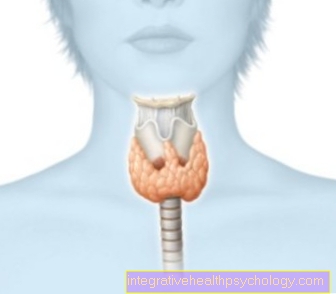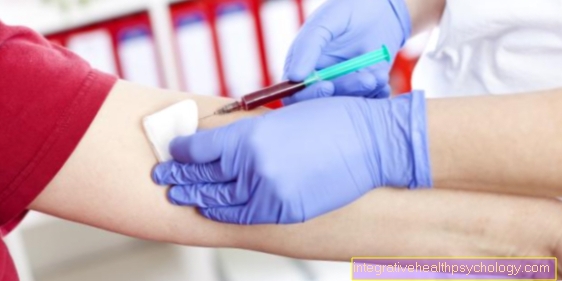I recognize epididymitis by these symptoms
Typical symptoms of epididymitis
The typical symptoms of epididymitis consist of:
-
Severe pain in the lower abdomen or in the pubic area
-
Swelling of the testicles and epididymis
-
Sensitivity to pressure and touch
-
Redness, warming, swelling of the scrotum
-
Painful urination
-
Increased urination and feeling of residual urine
-
Fever with possibly chills
-
General feeling of illness and reduced performance

Testicular pain
Testicular pain that occurs as part of epididymitis usually occurs acutely, rarely also chronically. They are characterized by a dull, cramp-like pain that can radiate to the pubic bone and lower abdomen. Testicular pain is often perceived as particularly severe compared to other pain. The testicular pain can be felt to be so severe that walking and sitting can be restricted. It must be noted that in every case of acute testicular pain, an emergency urological presentation should be carried out in order to rule out testicular torsion as the cause. In this clinical picture, which occurs especially in children, the rotation of a testicle causes the supplying and draining vessels to be clamped, which can lead to death of the testicle if it persists for a long time.
Read more on the subject at: Pain in the testicle
Painful urination
Inflammation of the epididymis is often caused by infections of the urinary bladder, prostate, or urethra. All of these infections can cause severe painful urination. These set in acutely during urination and only slowly go away a few minutes after completing micturition. Pain when urinating is not infrequently associated with a frequent need to urinate, which in combination can be extremely annoying and painful for those affected.
Do you suffer from painful urination? - More information can be found at: Pain when urinating in men
swelling
One of the most distinctive symptoms of acute epididymitis is swelling of the epididymis, testicles, and scrotum (scrotum). The disease usually begins with a slight, easily palpable swelling of the epididymis, which then spreads to the testicles. The swelling of both structures can lead to a significant increase in size. The inflammation leads in the course of an increased inflammatory water retention in the scrotum to a significant swelling of the scrotum to more than 10cm. Restrictions in walking and sitting can occur. After the diagnosis of epididymitis, elevation of the testicle and cooling measures can usually reduce the swelling quickly.
Read more on the subject at: Testicular swelling
Urge to urinate
If epididymitis is due to an infection or obstruction of the urinary tract, there is usually pain when urinating and an increased urge to urinate (pollakiuria).Since the amount of urine is usually very small, there is no overall increase in urine excretion. Possible infections are, for example, inflammation of the urinary bladder or urethra. However, narrowing of the urinary tract, for example due to inflammation of the prostate with accompanying swelling of the prostate, can lead to frequent urination.
Redness
In the context of epididymitis, classic symptoms of local inflammation can occur. In addition to pain, swelling, loss of function and overheating, these also include reddening of the affected structure and the skin over it. The reddening of the scrotum usually occurs a little later, when the epididymis and testicles already show significant swelling.
hardening
The scrotum hardens as a result of an inflammatory build-up of fluid on one side of the scrotum. The fluid continues to accumulate as the inflammation progresses and, above a certain size, leads to tension in the scrotum skin, as it cannot expand any further. The typical folding of the skin is eliminated in this case. In this case, this feels hardened, warms up and is accompanied by considerable swelling of the scrotum side. In addition, there is often an increased vascular mark on the skin.
Fever and chills
If epididymitis is pronounced, systemic involvement can occur, which is accompanied by a fever of up to 40 ° C, general fatigue and reduced performance. Particularly when the temperature rises initially, the fever is usually accompanied by chills. The pain relievers often used in the treatment of epididymis, such as ibuprofen or paracetamol, usually reduce the fever as well as relieve pain and reduce inflammation. After initiating antibiotic therapy, the fever should subside significantly after 2-3 days if the effect is sufficient.
Vomiting and nausea
As accompanying symptoms, nausea and vomiting can occur in the context of testicular and epididymal inflammation. In some cases, in addition to a systemic reaction to the inflammation, this is due to the existing testicular pain, which can often lead to nausea and vomiting. Antiemetics, medication against nausea, usually do not have to be used, since the symptoms of nausea usually disappear quickly after antibiotic and pain therapy have been initiated.
Lower abdominal pain
There are numerous different causes that can lead to the development of acute pelvic pain. One of these possible causes is inflammation of the epididymis and testicles. The pain is usually stated as dull and cramp-like. In addition to the pain focus in the scrotum, reports are usually also made of the pain radiating to the lower abdomen or the pubic bone. However, the pain can also be due to a cause of the epididymis, such as urinary bladder inflammation or prostatitis.
Read more on the topic: Abdominal pain in men
Symptoms in Children
Basically, children have a higher risk of developing epididymis and testicular infections than adults. However, since newborns and toddlers cannot articulate their symptoms, the child's behavior must be closely monitored in order to be able to draw conclusions about any existing symptoms. For example, pain when urinating in small children is increasingly expressed as crying and screaming, as well as unwillingness to go to the toilet. In addition, when palpating the abdomen, conclusions can often be drawn from the child's reaction to the pain focus. General local signs of inflammation, such as fever and the swelling, warming and reddening of the scrotum are, however, groundbreaking findings in the diagnosis of epididymis in children. In male children, with acute pelvic pain and swelling of the scrotum, testicular torsion, the twisting of the testicle with subsequent vascular clamping, must always be ruled out by means of an ultrasound.





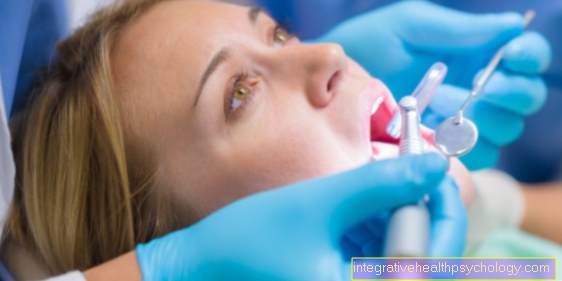
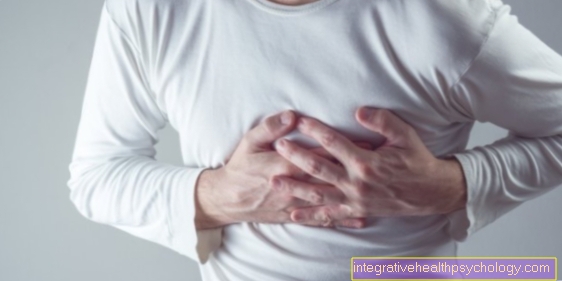

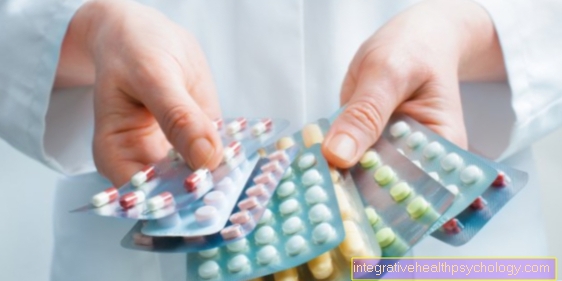


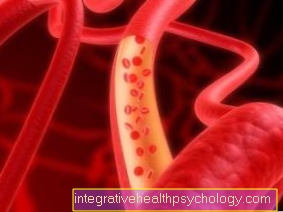



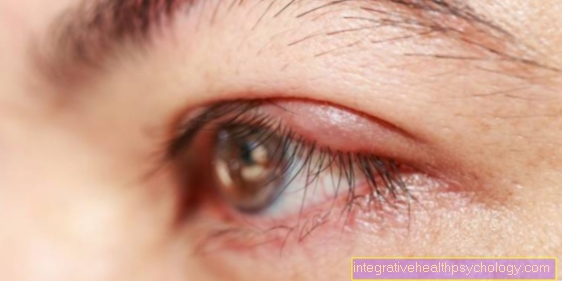

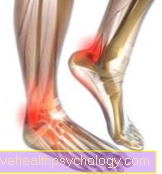


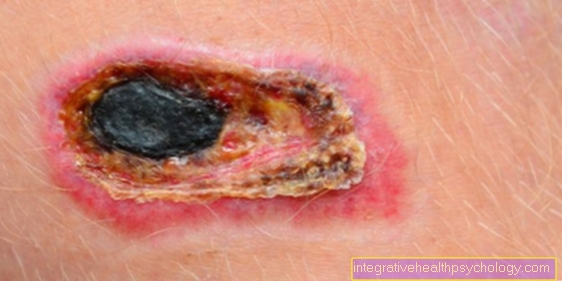
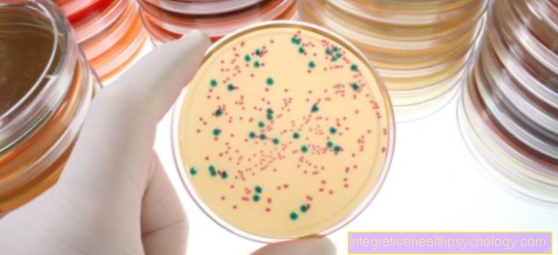
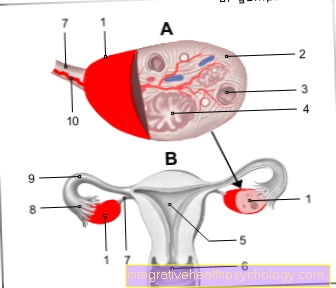
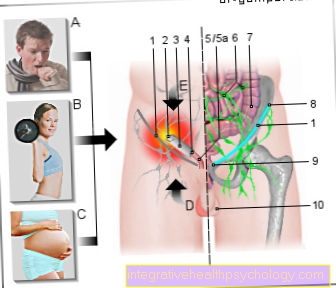

.jpg)
